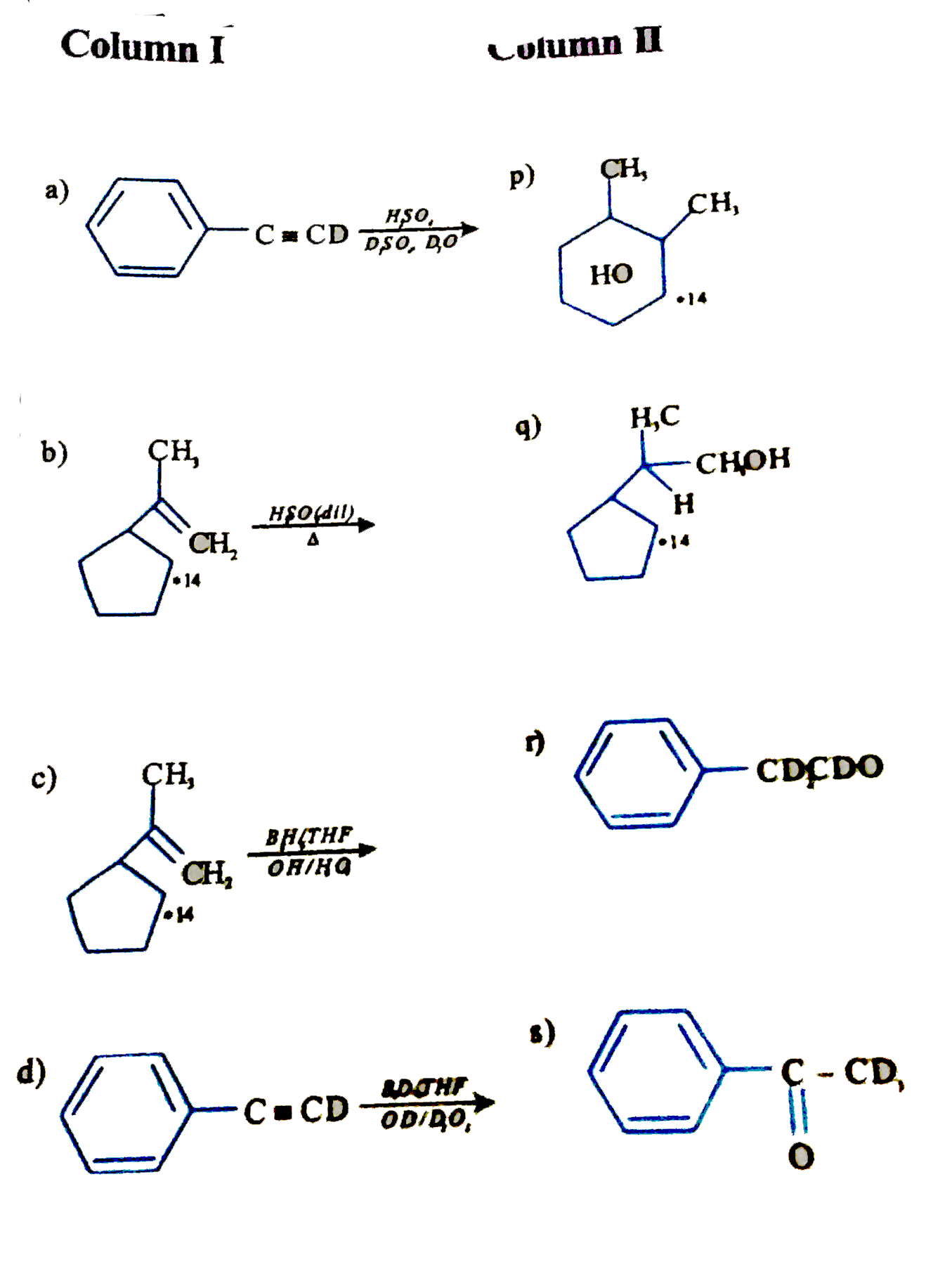Match the following list of microbes and their important
Column IColumn IIASaccharomyces cerevisiaei Production of immunosuppressive agentBMonascus purpureusii Ripening of Swiss cheeseCTrichoderma polysporumiii Commercial production of ethanolDPropionibacterium sharmanliiv Production of blood-cholesterol lowering agents
A-iv, B-ii, C-I, D-iii
A-iii, B-I, C-iv, D-ii
A-iii, B-iv, C-I, D-ii
A-iv, B-iii, C-ii, D-i
The correct Answer is:C
To solve the matching question regarding microbes and their important functions, we will analyze each microbe listed in Column I and identify their corresponding functions in Column II.
1. Identify Saccharomyces cerevisiae:
- This is a type of yeast commonly known as baker's yeast.
- It is primarily used in the fermentation process to produce ethanol.
- Match: A (Saccharomyces cerevisiae) → iii (Commercial production of ethanol).
2. Identify Monascus purpureus:
- This is a fungus known for its ability to produce substances that can lower blood cholesterol levels.
- It is used in the production of red yeast rice, which contains compounds that help in reducing cholesterol.
- Match: B (Monascus purpureus) → iv (Production of blood-cholesterol lowering agents).
3. Identify Trichoderma polysporum:
- This fungus is known for producing cyclosporin A, which is an immunosuppressive agent.
- It is used in organ transplant patients to prevent organ rejection.
- Match: C (Trichoderma polysporum) → i (Production of immunosuppressive agent).
4. Identify Propionibacterium shermanii:
- This bacterium is known for its role in the ripening of Swiss cheese.
- It contributes to the flavor and texture of the cheese.
- Match: D (Propionibacterium shermanii) → ii (Ripening of Swiss cheese).
Final Matches:
- A → iii (Saccharomyces cerevisiae → Commercial production of ethanol)
- B → iv (Monascus purpureus → Production of blood-cholesterol lowering agents)
- C → i (Trichoderma polysporum → Production of immunosuppressive agent)
- D → ii (Propionibacterium shermanii → Ripening of Swiss cheese)
- This is a type of yeast commonly known as baker's yeast.
- It is primarily used in the fermentation process to produce ethanol.
- Match: A (Saccharomyces cerevisiae) → iii (Commercial production of ethanol).
- This is a fungus known for its ability to produce substances that can lower blood cholesterol levels.
- It is used in the production of red yeast rice, which contains compounds that help in reducing cholesterol.
- Match: B (Monascus purpureus) → iv (Production of blood-cholesterol lowering agents).
- This fungus is known for producing cyclosporin A, which is an immunosuppressive agent.
- It is used in organ transplant patients to prevent organ rejection.
- Match: C (Trichoderma polysporum) → i (Production of immunosuppressive agent).
- This bacterium is known for its role in the ripening of Swiss cheese.
- It contributes to the flavor and texture of the cheese.
- Match: D (Propionibacterium shermanii) → ii (Ripening of Swiss cheese).
- A → iii (Saccharomyces cerevisiae → Commercial production of ethanol)
- B → iv (Monascus purpureus → Production of blood-cholesterol lowering agents)
- C → i (Trichoderma polysporum → Production of immunosuppressive agent)
- D → ii (Propionibacterium shermanii → Ripening of Swiss cheese)
Similar Questions
Match the following reaction in column-I with their products in column-II

View SolutionMatch column I with column II and select the correct option from the codes given below.
ColumnIColumnIIA.Statins(i)BiogasB.Dung(ii)Saccharomyces cerevisaeC.Ethanol production(iii)Monascus purpureusD.CyclosporinA(iv)Trichoderma polysporum
View Solution
Knowledge Check
Match the following list of microbes and their importance
(a)Saccharomyces cerevisiae(i)Production of immunosuppressive agents(b)Monascus purpureus(ii)Ripening of Swiss cheese(c)Trichoderma polysporum(iii)Commercial production of ethanol(d)Propionibacterium sharmanii(iv)Production of blood-cholestrol lowering agentsA(a)-(iv), (b)-(ii), (c )-(iii), (d)-(i)B(a)-(iv), (b)-(ii), (c )-(i), (d)-(iii)C(a)-(iii), (b)-(i), (c )-(iv),(d)-(iii)D(a)-(iii),(b)-(iv),(c )-(i), (d)-(ii)Column IColumn IIIAspergillus nigerA. Lactic acidIILactobacillusB. Butyric acidIIIClostridium butylicumC. Citric acidIVTrichoderma polysporumD. Cyclosporin A
Which of the combinations is correct?AI-B, II-A, III-D, IV-CBI-C, II-A, III-B, IV-DCI-A, II-B, III-C, IV-DDI-D, II-B, III-A, IV-CColumn IColumn IIISaccharomycesA. BacteriaIITrichodermaB. CyanobacteriaIIILactobacillusC . FungiIVNostocD. Yeast
Which of the combinations is correct?AI-D, II-C, III-A, IV-BBI-C, II-D, III-A, IV-BCI-A, II-B, III-C, IV-DDI-D, II-B, III-A, IV-C
Match the following reactants in Column I with the corresponding reaction products in Column II.

View SolutionMatch the reactions listed in column-I with the products listed in column-II

View SolutionMatch the reactions listed in column-I with the products listed in column-II

View SolutionMatch the following.
aCitric acidiStreptococcusbStreptokinaseiiAspergillus nigercCyclosporin-AiiiMonascus purpureusdStainsivTrichoderma polysporum
View SolutionMatch the following column correctly :
Column-I Column-II(A) Aspergillus niger (i) Eathanol(B) Clostridum butylicum (ii) Statins(C) Saccharomyces cerevisae (iii) Citric acid(D) Trichoderma polysporum (iv) Butyric acid(E) Monascus purpureus (v) Cyclosporin-A
View Solution
